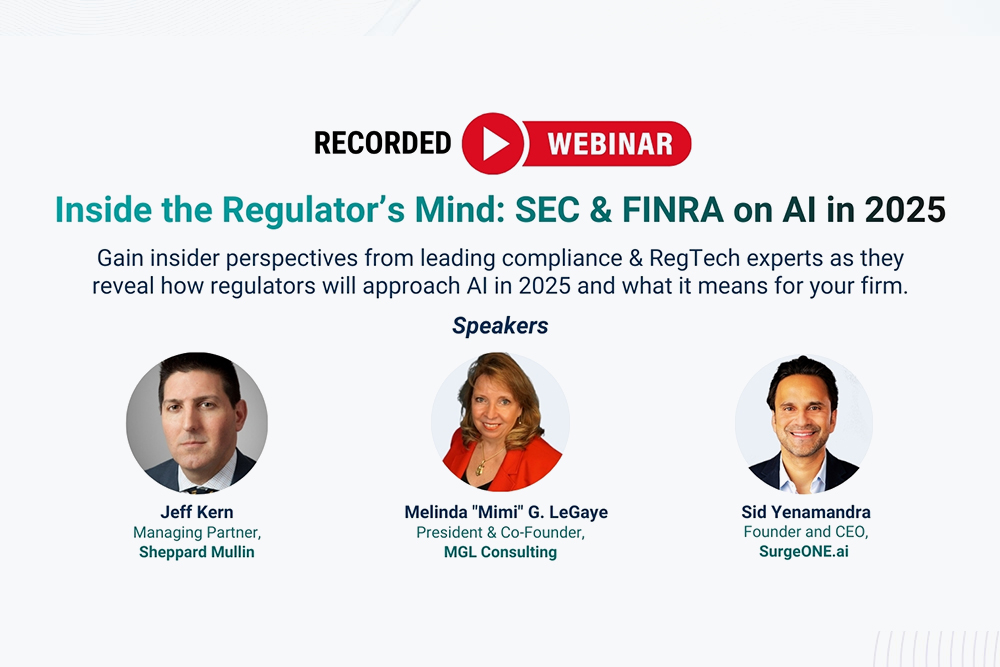Regulators are signaling higher expectations for AI supervision, transparency, and documentation. Automation helps, but expert-led oversight remains non-negotiable. Here’s what we covered and what firms should do next.
Our Expert Panel
- Jeff Kern - [Former FINRA/NYSE Regulator] -Regulators will ask how AI decisions are supervised and who is accountable have a clear ownership model and evidence of review.
- Mimi LeGaye - [President, MGL Consulting] - “Automation is not supervision.” Put human expertise around every critical AI output and prove it with artifacts.
- Sid Yenamandra - [CEO, SurgeONE.ai] - Build a single command center that unifies compliance, cybersecurity, and data so your evidence is one click away.
Key takeaways
- AI will face “traditional” controls. Expect exam teams to apply long-standing expectations (books & records, supervision, documentation) to AI-generated outputs from surveillance alerts to marketing reviews.
- Transparency is the test. Firms should be able to explain what an AI tool does, what data it relies on, how results are reviewed, and how exceptions/escalations are handled.
- Expert-led governance wins. Technology must be paired with experienced compliance judgment clear roles, pre-defined thresholds, and evidence that humans can override models.
- Documentation is your defense. Map policy → model use → controls → evidence so you can furnish a coherent narrative during exams.
- 2025 = targeted enforcement. Expect focused reviews of disclosures, rollover documentation, conflicts, vendor oversight, and the reliability of the data systems supporting fiduciary obligations.
What this means for 2025 exams
- Supervision framework: Treat AI outputs like any other supervised activity review queues, QC samples, attestation, and timely escalation.
- Model change management: Track versions, parameters, data sources, and approval history; log reasons for overrides.
- Evidence on demand: Be able to reproduce decisions, show audit trails, and export regulator-ready reports quickly.
- Vendor governance: Maintain due diligence files, SLAs, data-handling terms, and contingency plans for third-party AI tools.
Your 10-point readiness checklist
- Inventory all AI/ML use cases (surveillance, marketing review, ops).
- Assign accountable owners; document roles & escalation paths.
- Define acceptable-use policies and data-quality standards.
- Implement review workflows for AI outputs (sampling + SLAs).
- Log model versions, sources, parameters, and approvals.
- Capture override reasons and post-mortems for false positives/negatives.
- Map evidence to rules (SEC/FINRA) and keep export templates ready.
- Validate vendor contracts: security, data rights, audit support.
- Run an exam drill: produce a full AI governance packet in under 48 hours.
- Train staff—compliance + business—on when and how to challenge AI results.
If you’d like a short, tailored AI exam-readiness plan for your program, send us your top AI use cases and current supervision approach - we’ll map gaps and quick wins.

